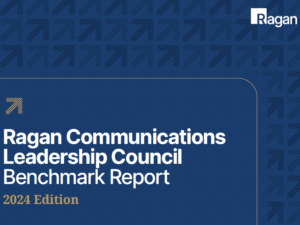The guide to connecting well-being to business metrics
If your execs are skeptical of the bottom-line benefits of engagement, suggest they write a $19,000 check every time someone heads toward the exit.

Workplace well-being has become a movement, but it doesn’t exist in a vacuum. As it gains importance, and as wellness departments expand, an inexorable evolution becomes increasingly likely to run up against an immovable force: Budgets.
Ultimately, financial decision-makers with organization-wide responsibility have to sign off on benefits and spending initiatives. Their task is to assess the ROI value of healthy and productive employees. But the c-suite’s mindset has shifted. It recognizes that wellness benefits, once seen as fringe offerings, are the new normal. Importantly, this extends to the c-suite’s financial representatives, the CFOs.
So what do CFOs think when it comes to investing in wellness benefits? An October 2020 survey by the Integrated Benefits Institute found 88% of CFOs believe cost control is one of their top five priorities. But 34% tied health benefits to strategic goals, including improving productivity, keeping hiring costs down, and improving employee engagement.
The concept of “employee well-being” was once mostly about lowering insurance premiums.
Organizations would push “wellness programs” that encouraged positive, healthy behaviors among workers. But over time, the definition of wellness evolved to include financial health, DE&I, and mental health as well. Because of these things, trying to calculate the ROI of employee well-being is inherently difficult because well-being is an intangible aspect of employment.
According to the Harvard Business Review, high stress lowers productivity and performance. Unfortunately, stress affects virtually every person in the workplace today, be it work-related, financial, emotional or otherwise. Financial stress in particular is a major challenge for workers, because lots of Americans live paycheck to paycheck. CNBC reported last year that nearly eight out of every 10 workers is one paycheck away from serious financial troubles. Obviously, it’s hard to give your best effort on the job if you’re struggling to pay the bills.
Lack of sleep is another issue that profoundly affects productivity. According to a recent Yahoo article, researchers found that the average person sleeps approximately six and a half hours a night. On any given day, then, your workers are likely either stressed out or tired—and probably both. What effect does that have on your bottom line?
As outlined by the U.S. Chamber of Commerce Foundation, businesses with highly engaged employees are up to 21 percent more productive, have 25 percent less turnover (in high-turnover industries) and have up to 37 percent lower absenteeism rates.
Using these three crucial metrics, you can estimate the impact of increasing employee engagement:
Productivity
If the average worker contributes $10,000 of value to the business, increasing that by 21 percent and multiplying it across a workforce of 1,000 is a net benefit of more than $200,000.
Retention
The longer workers stick around, the more employers save on turnover costs associated with hiring and training. TLNT estimates turnover costs to be $19,000 for an employee making $50,000 per year.
If your execs are skeptical of the bottom-line benefits of engagement, suggest they write a $19,000 check every time someone heads toward the exit. Surely they’d appreciate a 25 percent reduction of that expense.
Absenteeism
Engaged workers take less unplanned time off to binge on Netflix or play hooky. Lower absenteeism leads to improved customer experiences and reduced overtime costs to fill in for unexpected absences, which further boosts the bottom-line impact of engaged workers.
Pursuing employee well-being is not just a nice thing to do. Organizations that are keen on maintaining productivity, retention and profitability should make worker wellness a top priority.
How do you know if your wellness program is having the desired effect?
This should be an important concern for anyone in the wellness field, particularly after a disheartening study published in 2019 showed that there was little clinical proof of reduced health care costs for workers enrolled in workplace wellness programs.
However, researchers note that the field of workplace wellness is relatively new and there is still much to learn about the impact that employers can have on the well-being of their people, particularly when intersectional causes like mental health and financial stability come into play. However, you will have very little idea of what is really working if you are measuring all the wrong things.
Cigna, a worldwide health organization based in Bloomfield, Connecticut, has produced a framework to help wellness pros evaluate their programs. It includes five parameters, including these:
- Cost
- Financial Savings
- Employee Feedback
- Health Outcomes
- Participation and Engagement Rates
Cigna notes that there are other factors that might influence the efficacy of a wellness program. For example, an individualized approach is more likely to be successful if the goals are to reduce specific health risks, but an organization-wide effort is better for fostering a culture of health and well-being within an organization. One thing that has been shown to offer the highest returns on investment? Mental-health intervention.
In order to understand what goals to set for a wellness program—and therefore which metrics to track, Cigna offers another framework:
- Recognize business loss drivers
- Develop and effective program
- Measure for success
- Maintain program engagement
Cigna’s advice is to focus on a specific business loss-driver, such as absenteeism, and then use the Cigna four-step process to arrive at the critical metrics that will inform your ROI.
One thing that you can always measure is engagement rate—and essential indicator of ongoing success or diminishing returns. “The success of workplace wellness programs largely depends on employee participation and continued engagement,” Cigna says. “However, in most cases, employers achieve a high initial participation rate but lose engagement over time.”
When engagement rates were elevated, however, the results were undeniable. “When engagement rates changed from 75% to 92%, the return on investment increased eleven-fold,” Cigna says.






